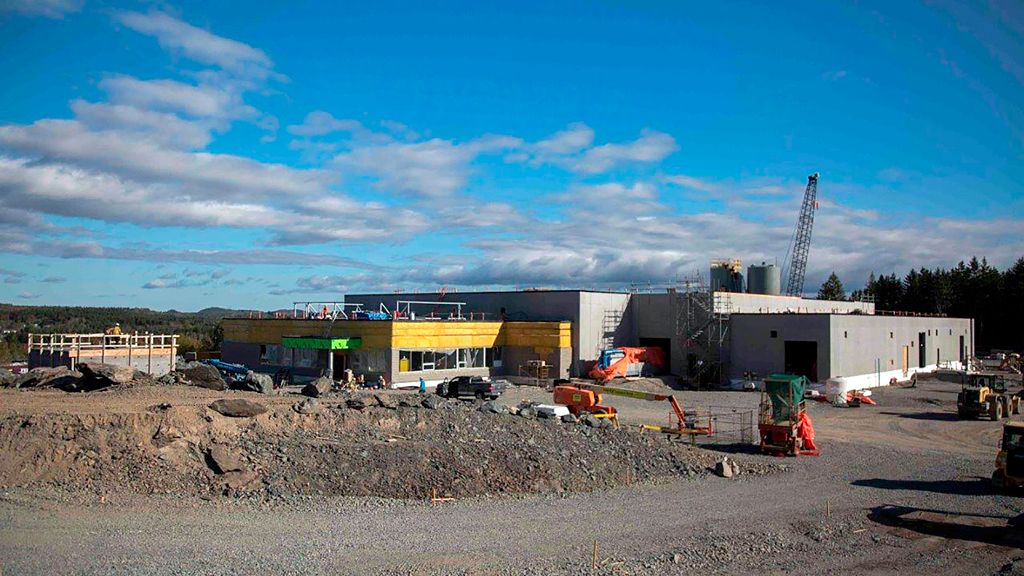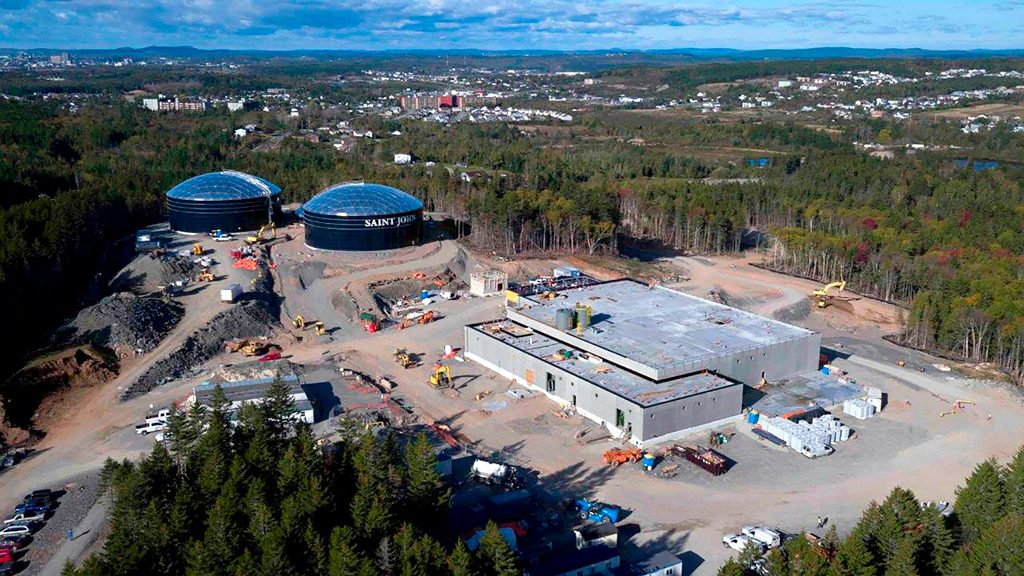The largest municipal project ever in Saint John, N.B., should please residents, particularly on the city’s east side where drinking water boil orders have come all too often.
The Safe Clean Drinking Water Project (SCDWP) Loch Lomond Drinking Water Treatment Facility is a $228-million project comprised of a new water treatment plant with a capacity to treat 75 million litres of water a day, a 33-million-litre clean water storage facility and other water transmission system improvements, says Dean Price, project manager for the City of Saint John.
He says the three-year construction project, scheduled to be completed by the end of 2018, will eliminate the sweeping boil orders residents currently see when disinfection of the current water system, which is only screened and chlorinated, is interrupted, sometimes by as little as three or four minutes.
Price says boil orders have been required for various reasons, including watermain breaks, chlorination problems and even weather that “stirs up sediment” in the lake.
The new water treatment plant and storage facilities will be located on a greenfield site on the city’s east side and will serve residents also on the north and south sides, representing about three quarters of the city’s residents.
Fifty per cent of the financing for the public-private partnership project comes from the federal and provincial governments, with the remainder from the City of Saint John.
Port City Water Partners (PCWP) is the consortium overseeing the project under a design, build, finance, operate and maintain contract for 33 years. PCWP includes Brookfield Financial Securities, Acciona Group of Companies, North American Construction, AMEC Foster Wheeler, Stantec Consulting, SIMO Management, FCC Construction and Gulf Operators.
The PCWP is constructing the 25-kilometre water pipeline and its long-term arrangement is to operate the plant.
Price says the storage facility consists of three 11-million-litre bolted steel tanks made by Greatario Engineered Storage Systems of Ontario. The steel tanks are lined inside and out with glass for improved durability over protective paint coatings.

The project also includes improvements to the existing water systems such as the distribution system, and disinfection and pumping systems.
A lot of the old pipes, including 24-inch cast iron pipes installed in the 19th century, will be replaced, says Price. Some sections are being sliplined, which is a trenchless process of installing small-diameter high-density polyethylene pipes inside existing cast iron pipes.
The objective is to minimize disruption to businesses and traffic, the project manager says. Grout is pumped between the old and new pipes to secure the new line.
As part of the SCDWP, water source improvements are also being done at dams on Latimer and Robertson Lakes. The concrete spillway and access roads will also see improvements, says Price.
The west side of Saint John won’t be hooked up to the new water treatment plant.
However, under the umbrella of the SCDWP, three new wells were drilled because “the quality of groundwater there is excellent and it doesn’t require filtration,” says Price, adding it will be chlorinated. The work, which was completed in 2017, included new pumps, a wellhouse and transmission lines.
Price says the SCDWP is not only the largest municipal project in the city but also probably the largest ever in New Brunswick. Typically, a $50- to $80-million project is “huge” for a municipality, he says.











Recent Comments